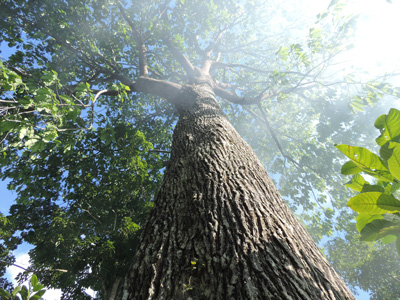What's the Big Deal About Chestnuts?

Since the early 1900s, the American chestnut has almost disappeared from our culture. We hear historical hints of chestnuts in songs lauding "chestnuts roasting on an open fire..."
I never ate a chestnut until my Japanese wife introduced them to me fifteen years ago. Initially, I was underwhelmed because she would buy these "hard-to-peel" chestnuts and the bitter inner shell of the chestnut embedded itself in the chestnuts' crenulations. Again, I was underwhelmed.
In those early years, my wife fanatically devoted painstaking effort to process her "precious chestnuts." I didn't understand her cult-like facination with chestnuts. Being the helpful sort, I begain to wonder if there was an easier way to satisfy my wife's chestnut addiction.
Excited to please my wife, I researched how chestnuts were processed in other countries, such as Italy, Portugal, China and Japan. Researching chestnut varieties and growing habits intrigued me immensely. I began considering planting a few chestnut trees on our Idaho farm.
My wife was mildly amused. Then she became delighted. I started ordering fresh chestnuts online from different parts of the United States. During the 2021 season, we ordered and roasted over 100 pounds of chestnuts from various online vendors in Iowa, Illinois and Washington. I noticed a huge difference in flavor and how easy the nuts peeled. The Dunstan variety was the "easy-to-peel chestnut" winner. The nuts were also larger than Washington's variety.
For full disclosure, we ordered at least twice from multiple vendors during my research.
My wife liked the chestnuts from Washington, but I found the Washington chestnut variety difficult to peel. I learned this is due to the variety.